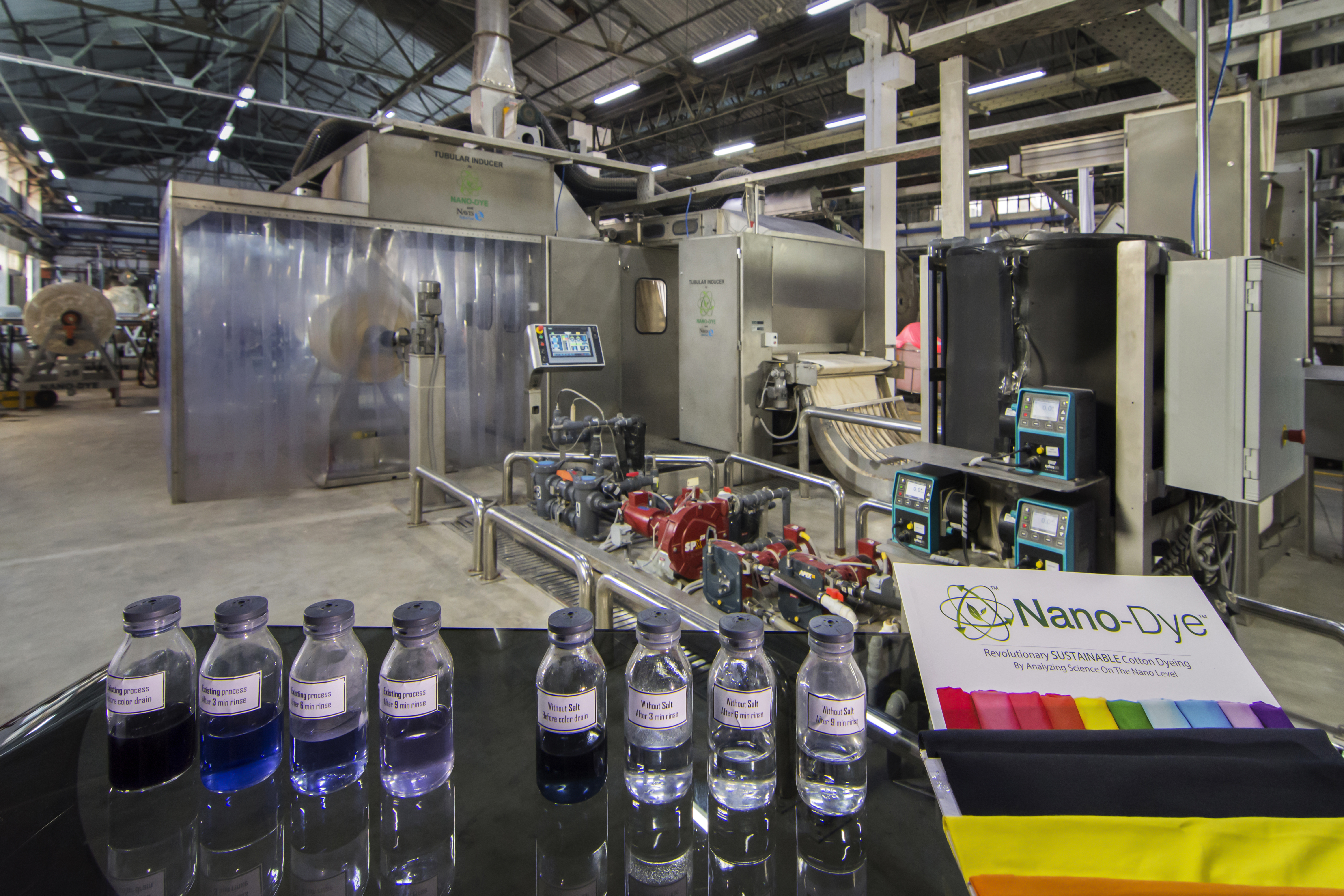Unique Fabric Manufacturer
Nano Dye
Worldwide, there are millions of exhaust dye jets in operation to dye Cotton Textiles. The current cotton exhaust dye jet method discharges large quantities of liquid effluents containing salt, heavy metals from hydrolyzed dyes, phenols, and toxic surfactants and organic compounds. Water usage for exhaust dyeing of cotton is very high. To treat this thick and hazardous discharge, a tremendous amount of energy is needed to clean the waste, which effects climate change. Nano-Dye Process technology is a revolutionary and eco-friendly solution for cotton dyeing exhaust industry. We reduce waste by not creating it. Our Plug-and-Play solution uses the existing cotton exhaust jet machinery and dye stuff so not to cause any plant disruption.Our one step drop-in process pretreats the cotton prior to dyeing and reverses its charge in water to let mother-nature do the work by attracting the now oppositely charged dyestuff.
So, the Results are astounding;
- No salt is needed, eliminating solid waste.
- Dyestuff is now exhausted up to 97% instead of up to 75%.
- Eliminates sludge
- Eliminate the conventional dyeing rework of 10%.
- Reduce water use by up to 75% due to less wash baths.
- Due to cleaner effluent and lower water treatment time, we have energy savings over 50%.
We make closing the loop a reality for cotton exhaust dyeing by eliminating salt, which significantly reduces zero discharge plants’ investment and processing cost.
Impress-Newtex Bangladesh is the first to adopt the Nano-Dye Solution in the world.

CPB Dye
NCTL also has daily 20 MT capacities of Cold Pad Batch – CPB, a new environment friendly and sustainable alternate method of reactive dyeing using fewer resources. Continuous bleaching, Padder and washing machines are from Erbatech, Germany. Only 22 factories in the world have this unique CPB technology with the advantages of
- Reduced water consumption
- Reduced energy consumption, as it is done at room temperature
- Higher percentage of dye fixation
- Fewer and cleaner effluents: No salts or silicates
- Shiny fabric surface without crease marks
- No need for enzymatic bio polishing
- Less manpower compared to other dyeing processes